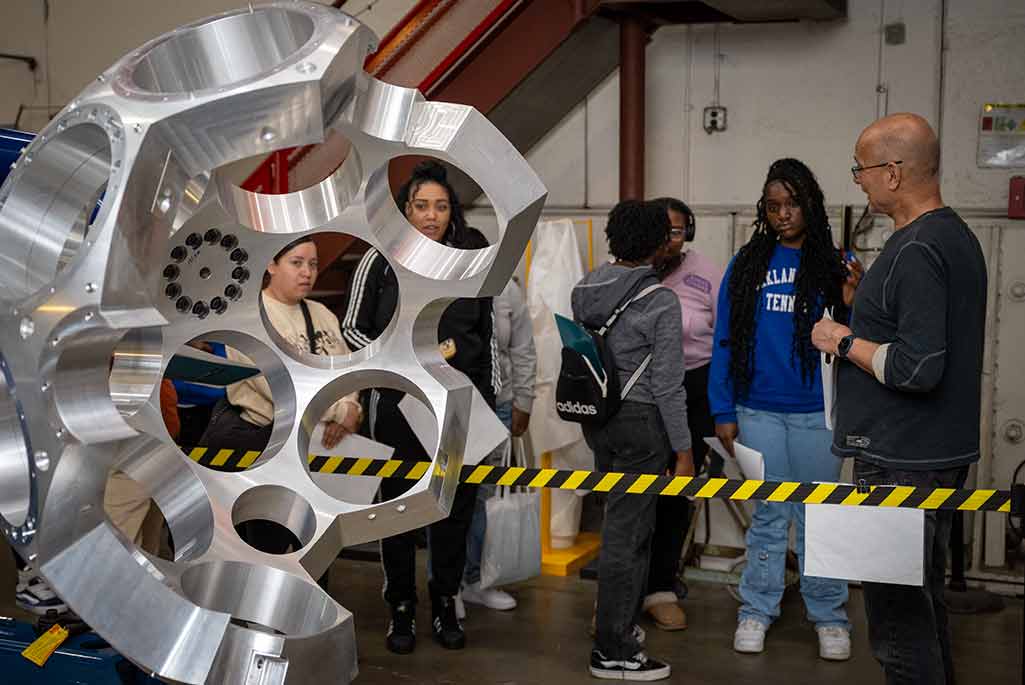On March 20th, over 60 students and teachers from Bay Area high schools visited the Lab for High School STEM Day, a monthly program hosted by Berkeley Lab’s K-12 STEM Education and Outreach Program in collaboration with the Women’s Support and Empowerment Council (WSEC). The program featured talks about science, technology, and engineering efforts Lab-wide, and included tours of the Engineering Division’s Fabrication and Composites Shops and the 88-Inch Cyclotron (part of the Nuclear Science Division), as well as the Advanced Light Source (ALS), the Integrative Genomics Building (IGB), and the National Energy Research Scientific Computing Center (NERSC).
As part of the Engineering Division activities, participants engaged in a round of speed networking, in which they were paired with six technicians and engineers to speak about their career aspirations. Rebecca Carney, a member of the Electronics, Software, and Instrumentation Engineering Department who designs detectors for CMB-S4, organized the Engineering Division events in Buildings 77 and 77A. “It’s a privilege to work with Berkeley Lab’s K-12 office again to showcase the breadth of skills and careers in the Engineering Division,” said Carney, who was especially impressed with the students’ engagement. “Our volunteers were incredible, and in addition to tangible products and tools from their work, they brought bounds of enthusiasm to the event. This made a massive impact on the students to the extent that when we had to call for the groups to rotate, they begged for more time with our volunteers.”
At the 88-Inch Cyclotron, in a program hosted by the Nuclear Science Division (NSD), students met with science and engineering staff to learn more about the diversity of Berkeley Lab’s research goals and how they are achieved as part of the coordinated efforts of researchers and engineers from a variety of disciplines and expertise areas. Ken Lambert, an electronics engineering technologist who organized the activities at the Cyclotron, observed that “It was great to interact with so many students interested in science and engineering, and they were very interested in learning about the operations of the cyclotron and the various experiments that are taking place there.”
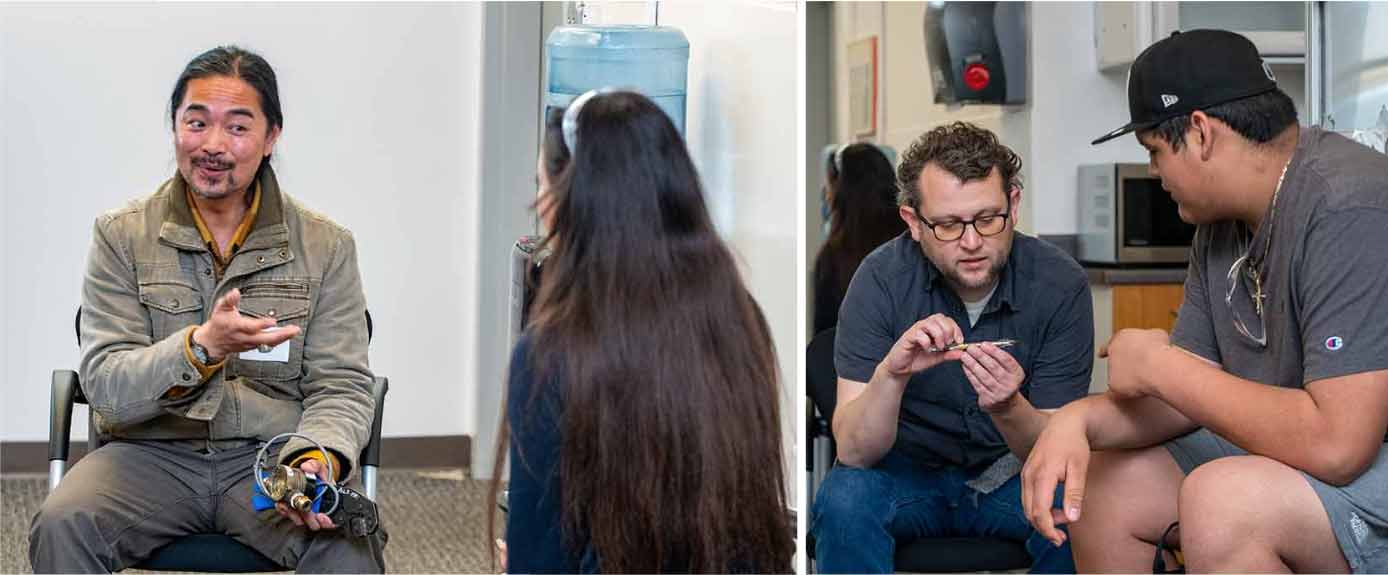
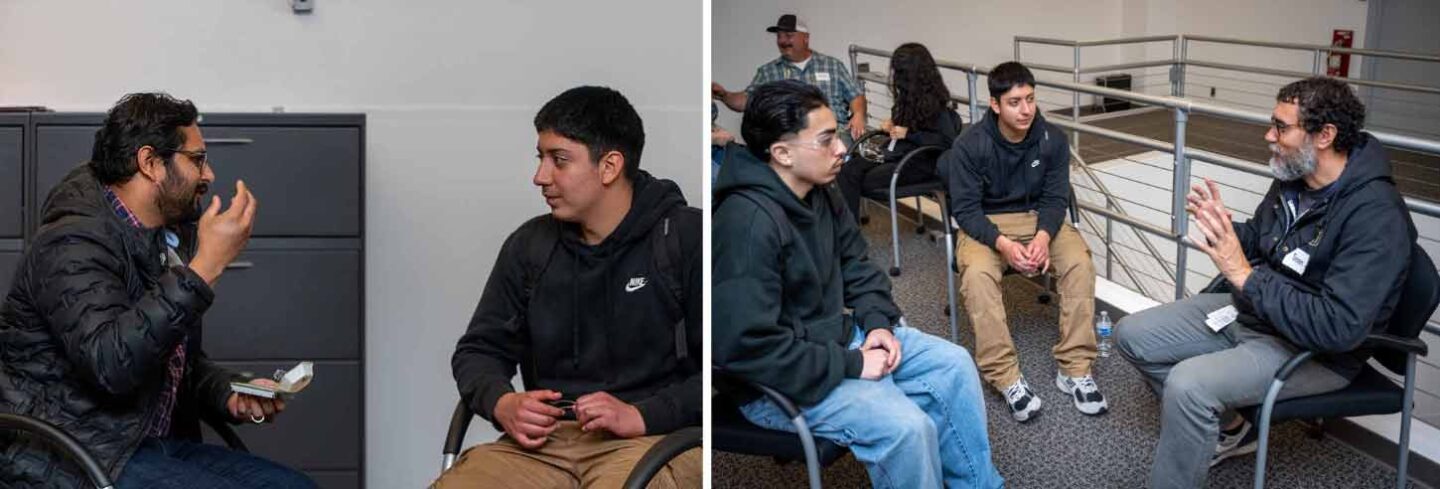
In Building 77, the students engaged in a round of speed networking, in which they were paired with technicians and engineers – including Andrew Lambert, Gabor Paulovits, Giorgio Vallone, Khoi Diep, Sean Spillane, and Tarun Prakash – to speak about their career aspirations. Above Left: Khoi Diep, while explaining the function of water flow sensors and how they serve as part of the beamline equipment protection system, also encouraged the students to explore career opportunities and outreach programs to figure out what they are passionate about. Above Right: Andrew Lambert showed students a DESI positioner prototype. Below Left: Tarun Prakash talked with students about ASIC development at Berkeley Lab. Below Right: Gabor Paulovits (top left) spoke to students about designing for manufacturability, the importance of gaining practical hands-on experience in machining and making things, and the value of teamwork. Meanwhile, Sean Spillane (bottom right) spoke with the students about their interests and the different career options at the lab. (Photos above by Thor Swift, Berkeley Lab)
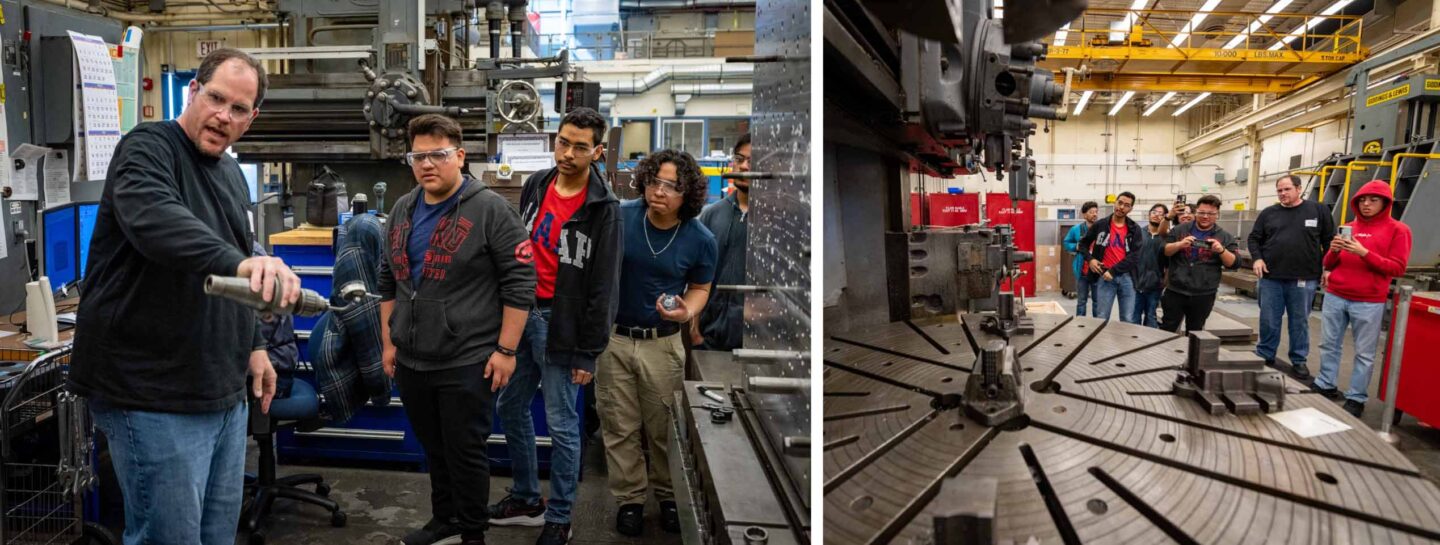
Kris Pearson, a principal engineering associate in the Engineering Division, showed students the large format Horizontal Boring Mill (HBM) and the large format VTL (74” Vertical Lathe). (Photos above by Thor Swift, Berkeley Lab)
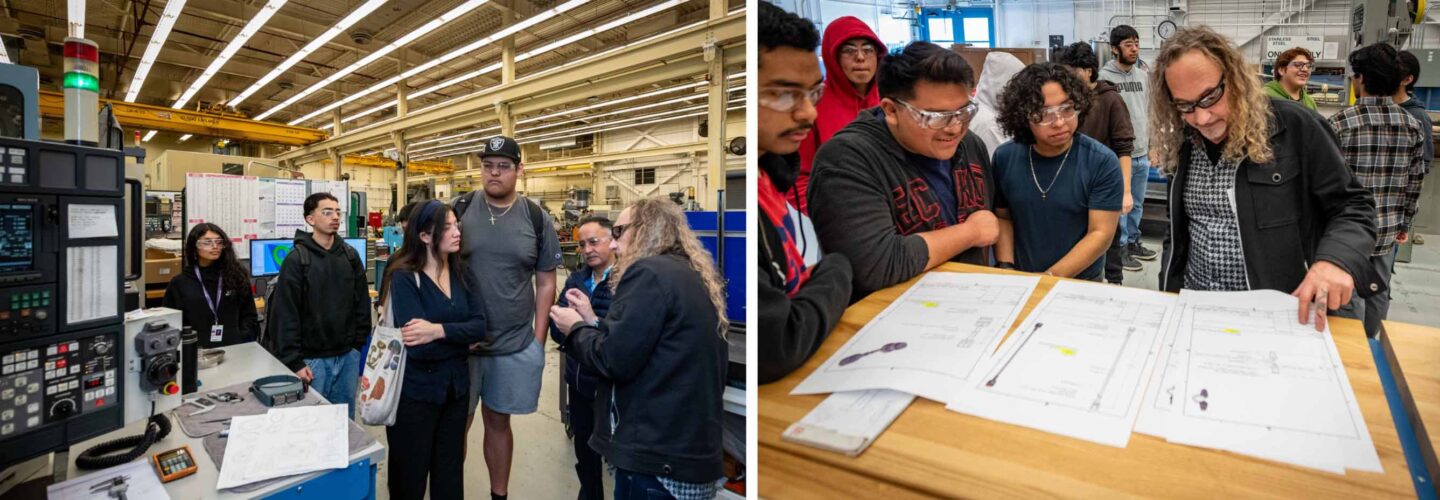
Rick Kraft, a technical manager in the Engineering Division, showed students around the Main Machine Shop and the R&D Fabrication and Welding department in Building 77. (Photos above by Thor Swift, Berkeley Lab)
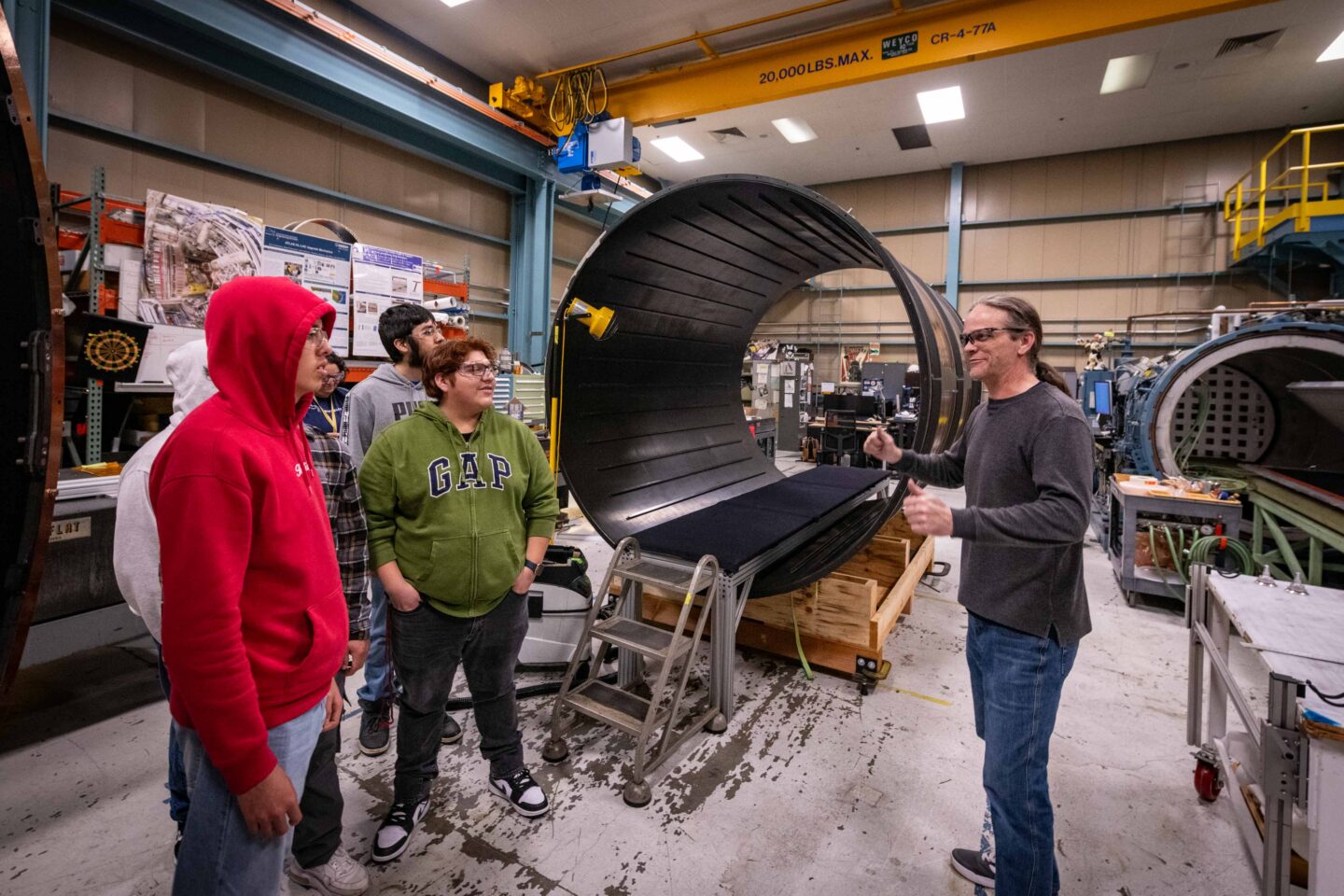
Tom Johnson, an engineering technical associate, showcased the carbon fiber support structures for the ATLAS Upgrade ITk outer barrel. (Photo above by Thor Swift, Berkeley Lab)
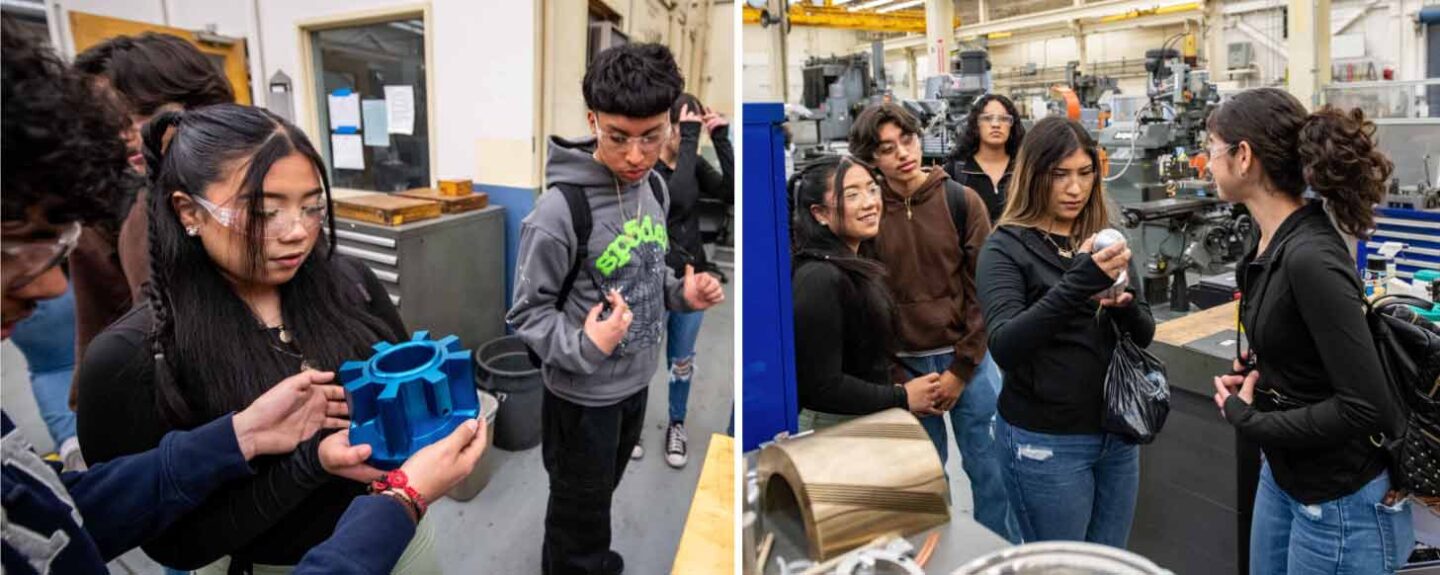
Students explored some of the Engineering Division’s Machine Shop creations, including prototype components (also known as “set-up parts”) showing a proof of concept for the ALS RF Kicker. (Photos above by Thor Swift, Berkeley Lab)
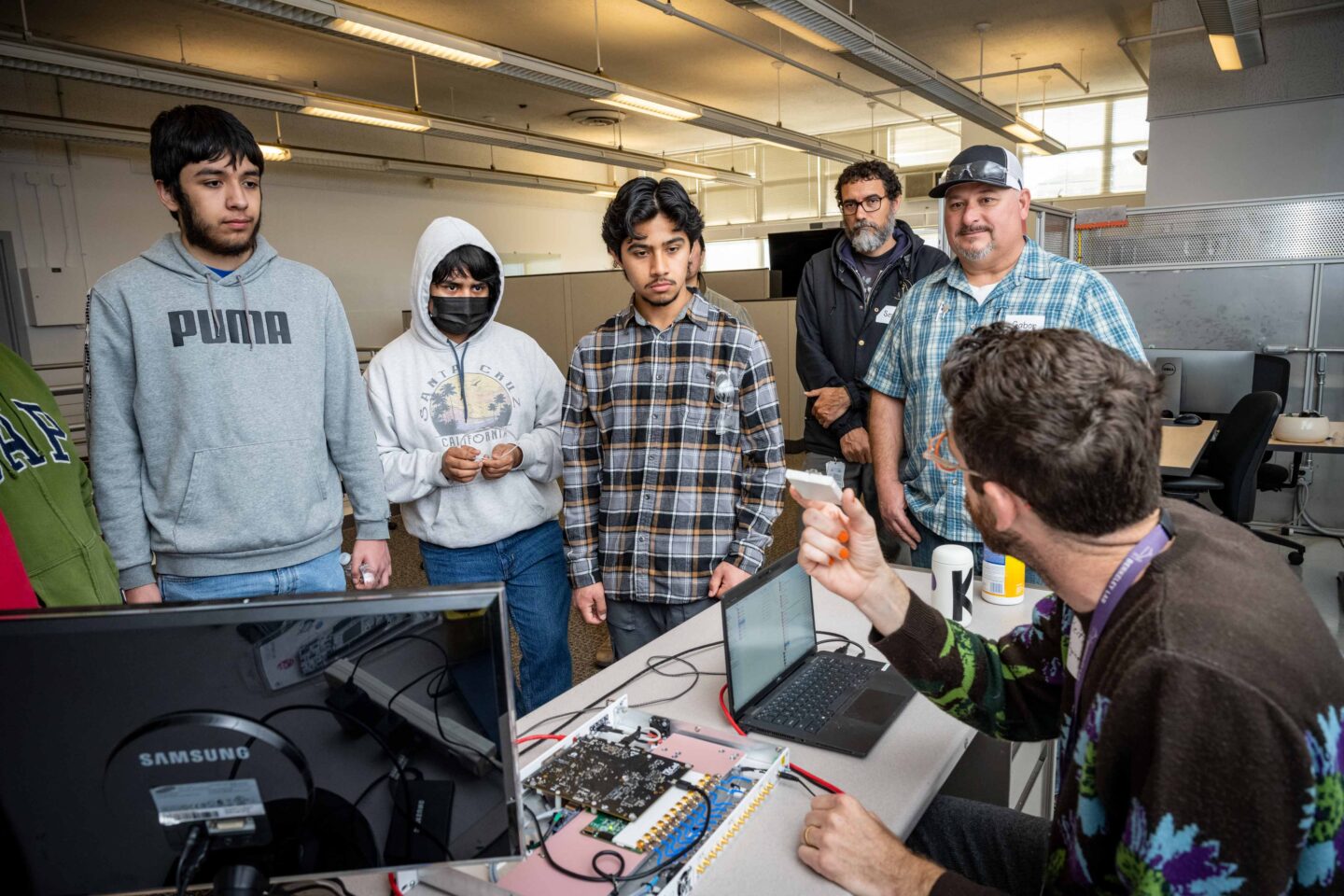
Keith Penney (seated), an electronics engineer in the Advanced Technologies Group, introduced students to low-level RF controls of accelerating cavities, while Sean Spillane and Gabor Paulovits (top right) look on. (Photo above by Thor Swift, Berkeley Lab)
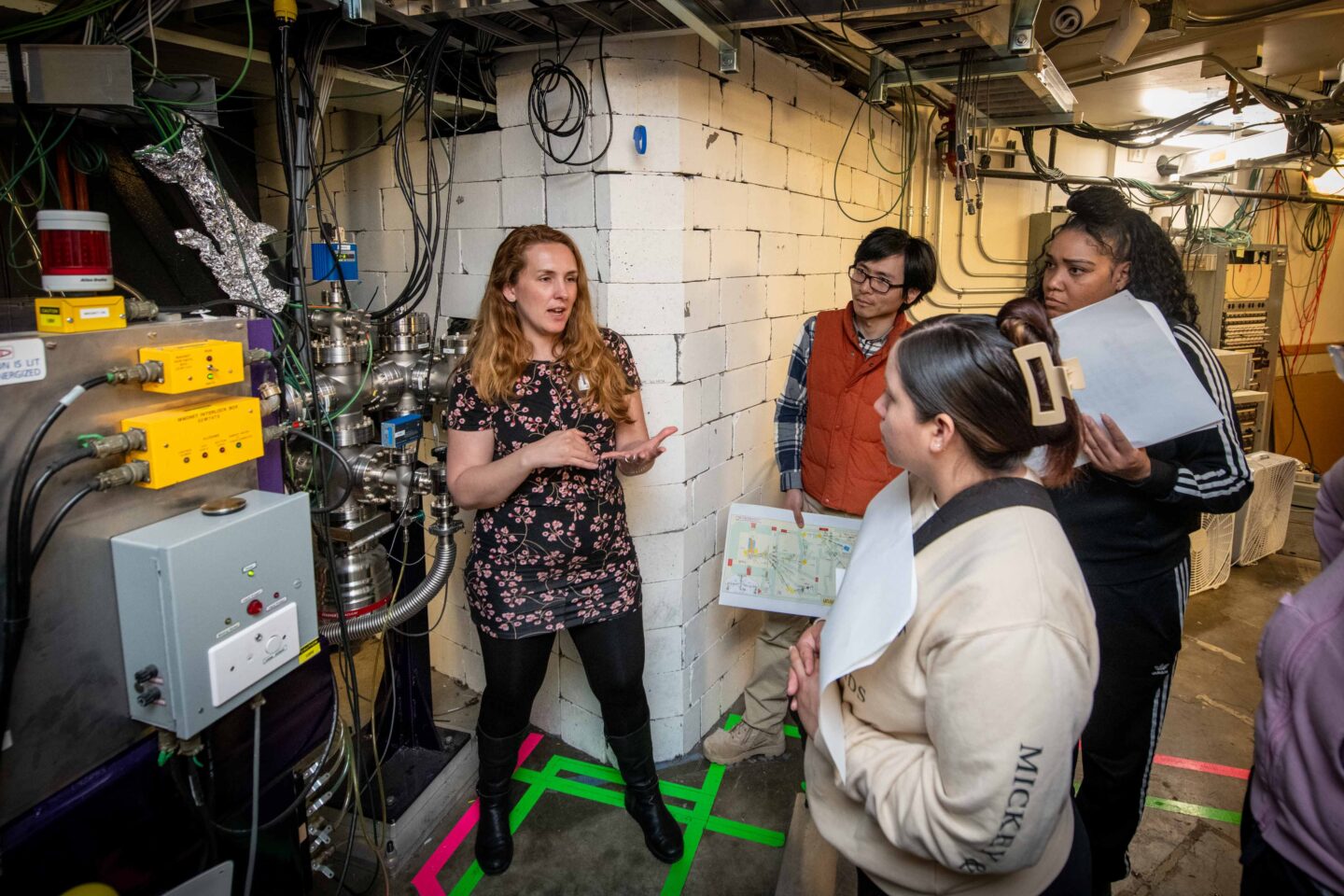
At the 88-Inch Cyclotron, Jennifer Pore, a research scientist in the Nuclear Science Division, explained the operation of the FIONA mass analyzer (For the Identification Of Nuclide A), pictured above, and the BGS (Berkeley Gas-filled Separator), which the Heavy Element Group uses in making and understanding superheavy elements. (Photo above by Thor Swift, Berkeley Lab)
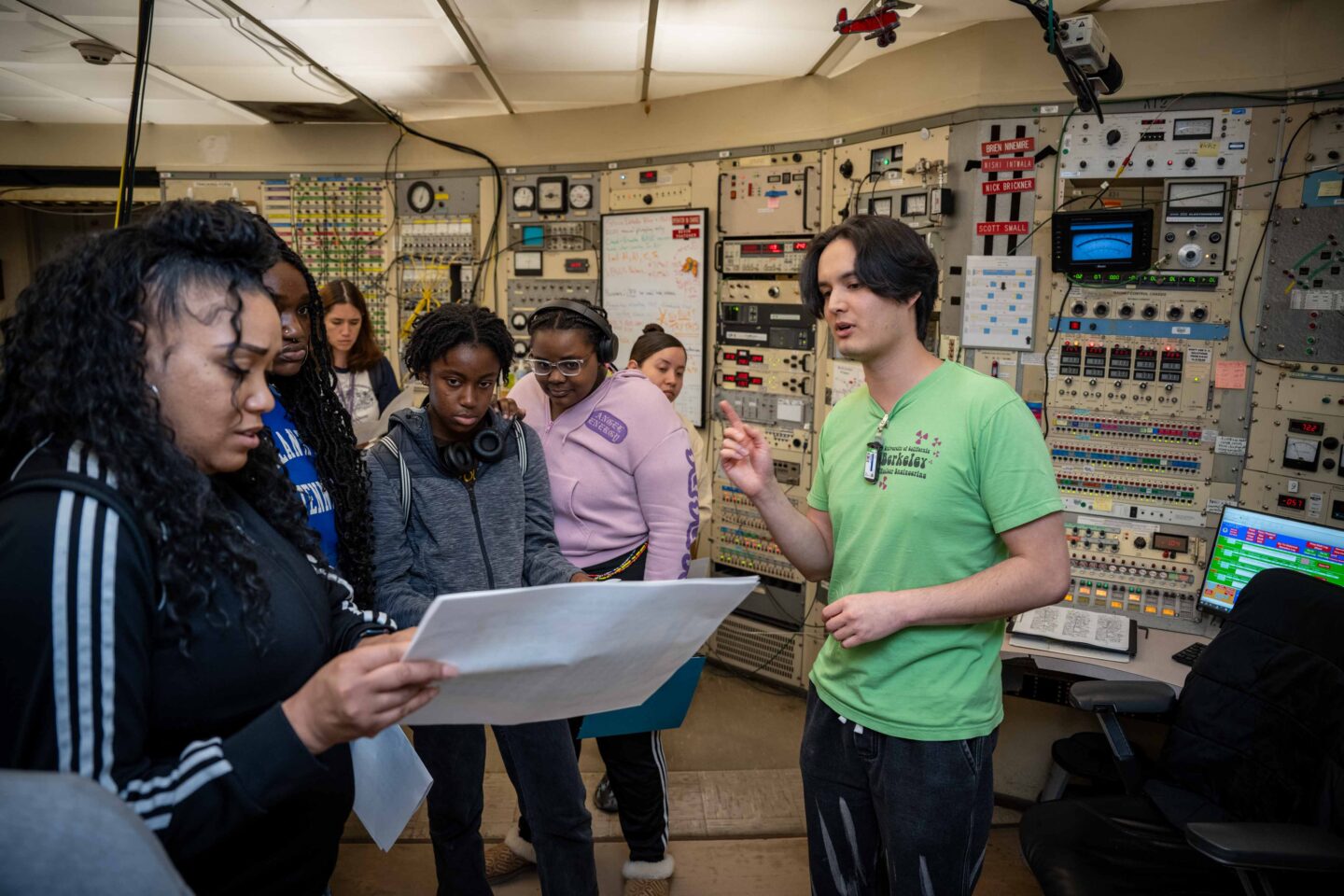
Devin Thatcher, an accelerator operator in the Nuclear Science Division, discusses the intricate process of day-to-day operations as “Operator-In-Charge” at the 88-Inch Cyclotron. (Photo above by Thor Swift, Berkeley Lab)
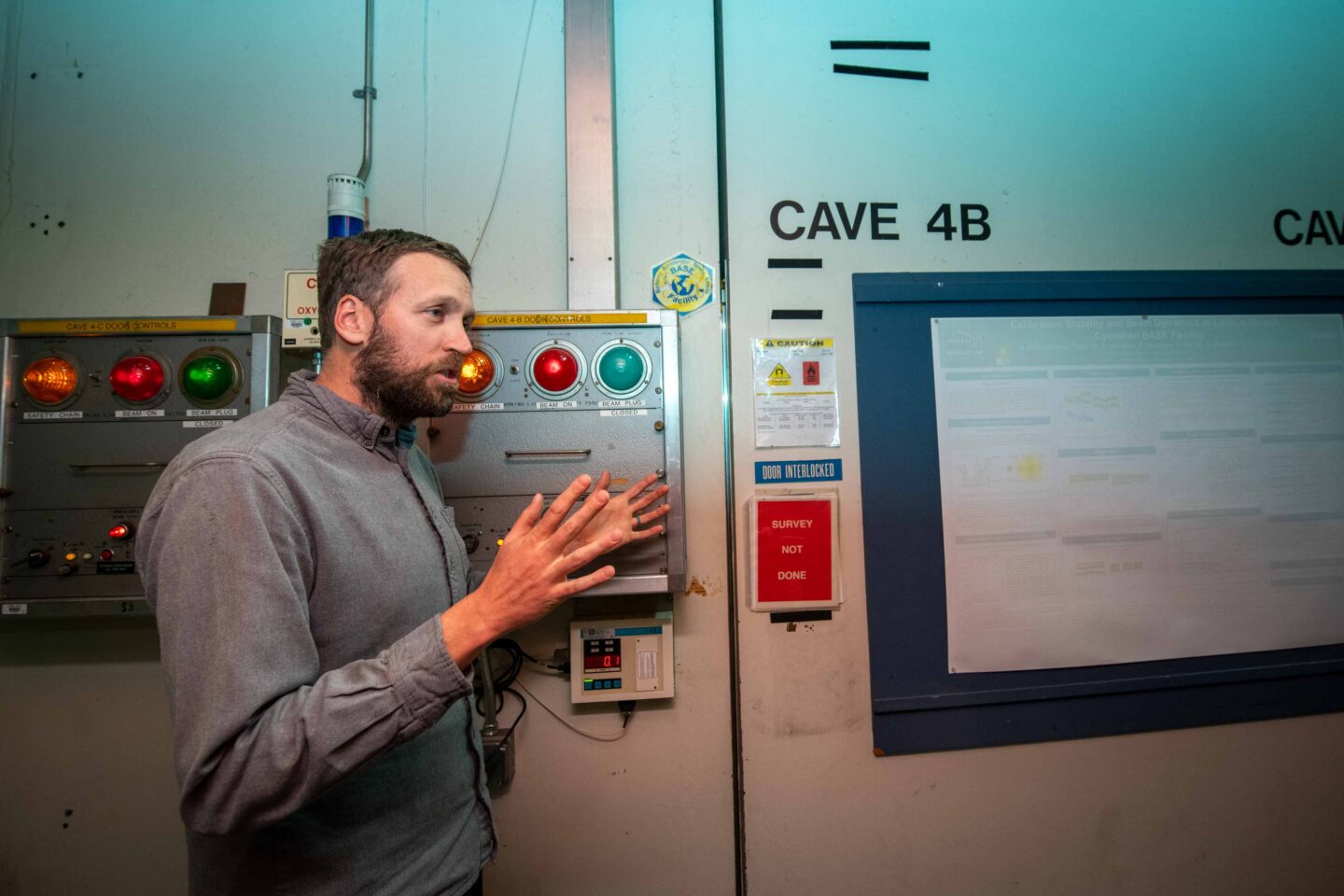
Alex Donoghue, a scientific engineering associate in the Nuclear Science Division, discusses the Berkeley Accelerator Space Effects (BASE) Facility and the many types of devices and companies that test their equipment at the 88-Inch Cyclotron. (Photo above by Thor Swift, Berkeley Lab)
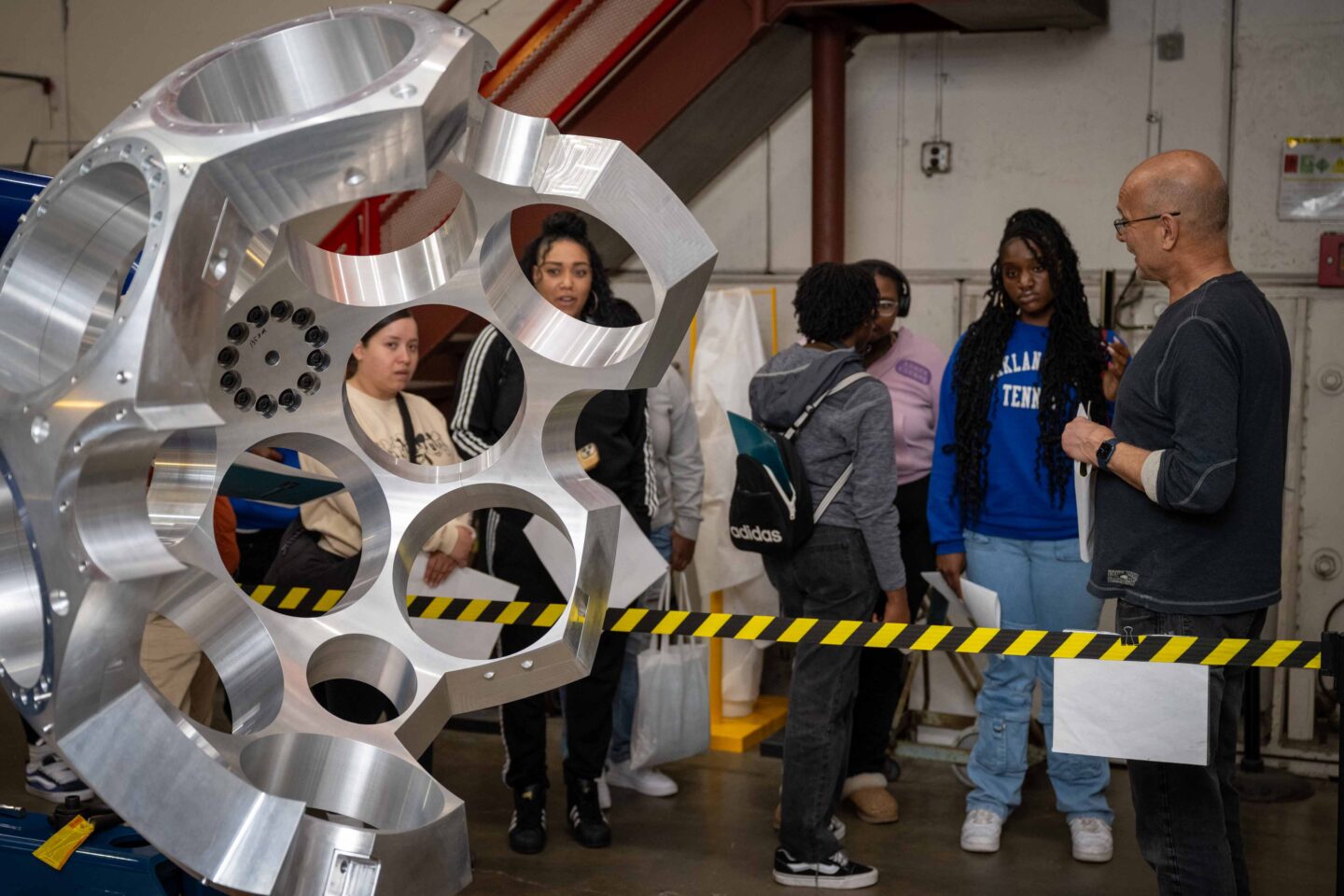
Rick Bloemhard, an electronics associate in the Engineering Division, discussed the GRETA (Gamma-Ray Energy Tracking Array) project, which is currently under construction at the 88-Inch Cyclotron. (Photo above by Thor Swift, Berkeley Lab)
The organizers also wish to thank staff volunteers Annemarie Del Bene, Dee Pickett, and Jeffrey Boyle for their contributions, which helped make this an impactful event for our visitors.
